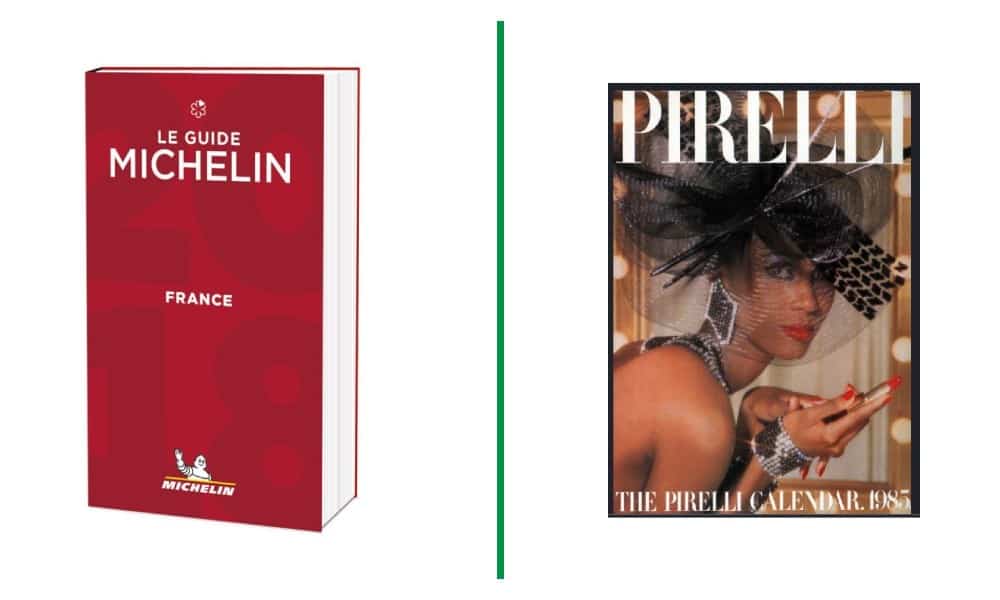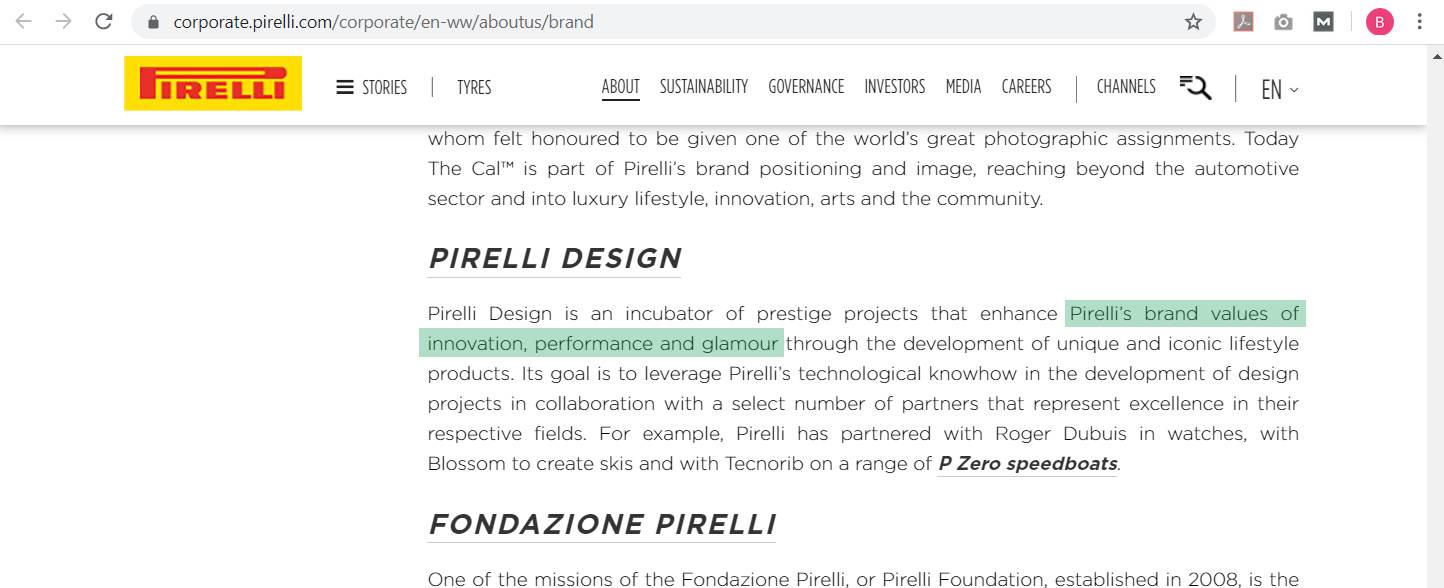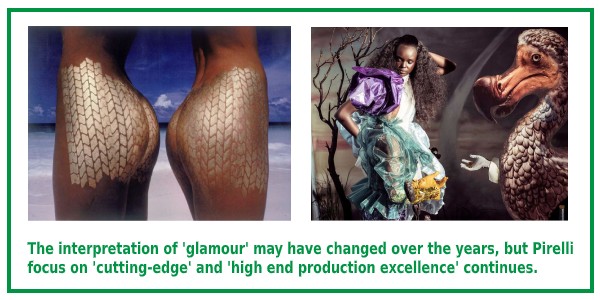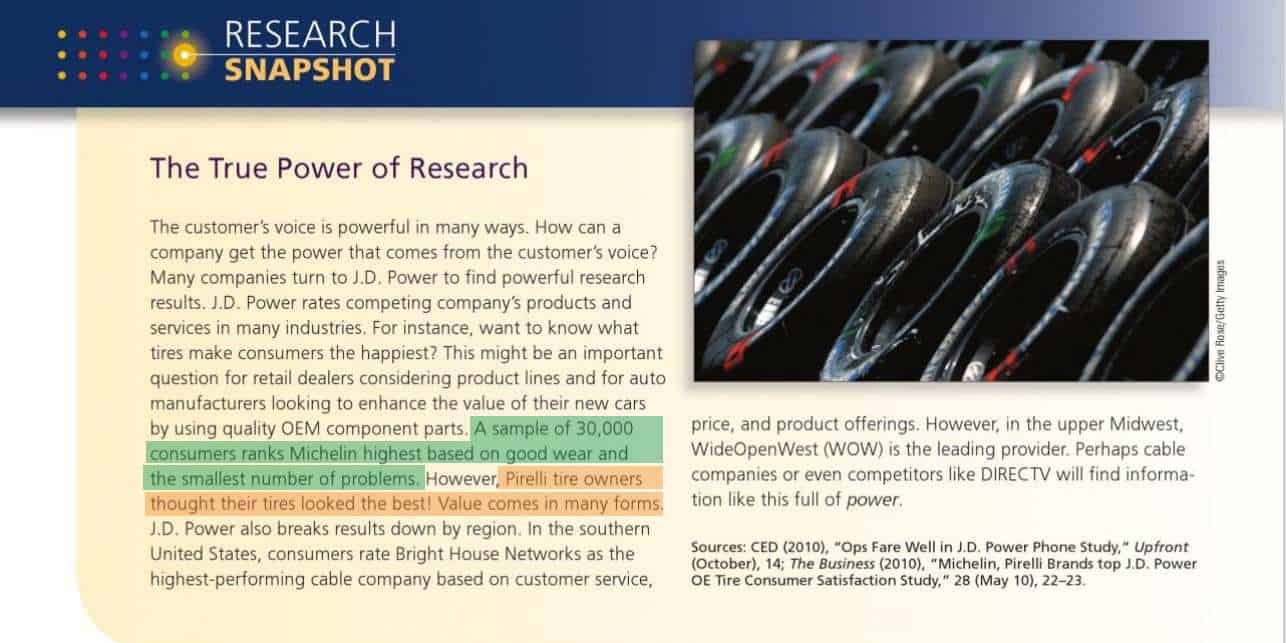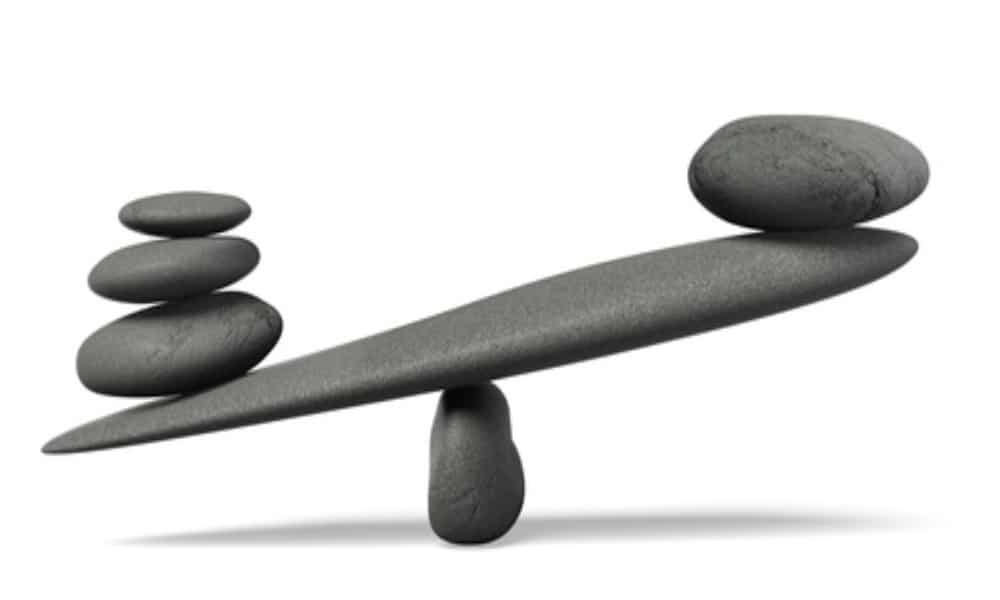Can you name three things that a restaurant guide and a girlie calendar have in common?
It might be easier if we get more specific. We’re talking about the Michelin guide and the Pirelli calendar.
Comparing the Michelin Guide and the Pirelli Calendar
The first thing you might notice is that Michelin and Pirelli are both tyre companies. So what’s with the guides and calendars? How do they sell tyres?
What Michelin and Pirelli have in common
- They are examples of successful content marketing.
- They predate the internet.
- They’re built around tangential content.
Let’s look at those points in more detail.
Content marketing, as defined by the Content Marketing Institute, is ‘a strategic marketing approach focused on creating and distributing valuable, relevant, and consistent content to attract and retain a clearly defined audience — and, ultimately, to drive profitable customer action.’
Notice there’s no mention of the internet. Content marketing is not about blogs, white papers and downloadable resources. Those are just some of the ways to share the content, and the content is what matters.
What about ‘tangential content’? What that means is the content is not primarily (or at all!) about the company you’re promoting, or the product you’re selling. It’s about something which matters to your client. It’s valuable and relevant to your customer or potential customer.
So how did Michelin and Pirelli achieve valuable, relevant content? And how did that ultimately drive profitable action?
The Michelin Guide
Michelin published the first Guide way back in 1900 and distributed it free to motorists. They shared information motorists would need – hotels, restaurants, sightseeing, where to get gas, where to get your car serviced or repaired.
How did this drive ‘profitable customer action’? The logic is
- make it easier and more interesting for people to travel
- increase the number of cars on the road
- drive demand for tyres
- sell more tyres and make more money
The Pirelli Calendar
The Pirelli calendar is a relative newcomer, which only started in 1964. It was originally distributed to Pirelli’s largest distributors, and has a different strategy for ‘profitable customer action’.
- Most drivers trust their mechanic to choose their tyres, or at least recommend a brand.
- Let’s incentivise the mechanics to choose Pirelli by giving them something they like and making it exclusive. Remember, the calendar only went to the largest distributors!
How Michelin and Pirelli are different
One key difference between Michelin and Pirelli has already come out. They’ve aimed their content at very different markets. Michelin and Pirelli seem to have different opinions about who decides which tyres to buy!
But that’s not the only reason the flagship content of the two companies is so different. It’s also tied in to their different brand positions.
Michelin brand and purpose
If you search for Michelin brand values, you find these statements on their website:
- Michelin is determined to share the adventure of better mobility with everyone
- Offering everyone a better way forward is the backbone of Michelin’s purpose.
Notice that word ‘everyone‘. It comes up in both statements.
Now, when we think about the Michelin Guide, we may well think of three star restaurants and feel it’s a bit exclusive and snooty. But that’s not the Michelin intent. Bear in mind that most of the restaurants in the Michelin Guide don’t have three stars. And since 1955 (yes, before Pirelli even started their calendar), the Michelin guides have included a ‘Bib Gourmand‘ section for ‘exceptionally good food at moderate prices‘.
Michelin is doing all it can to be a brand for everyone.
Pirelli
Pirelli, on the other hand, is not a brand for everyone. Here’s what their website says:
Founded in Milan in 1872, today Pirelli stands as a global brand known for its cutting edge technology, high-end production excellence and passion for innovation that draws heavily on its Italian roots.
With over 40 years of experience in the Premium and Prestige segment Pirelli is a Pure Consumer Tyre Company, has a particular focus on the High Value tyre market and is constantly engaged in the development of innovative products to address the most specific mobility needs of the final Consumer, such as Specialty and Super Specialty tyres.
The company’s product range consists of innovative tyres for cars, motorcycles, and bicycles due to the solid partnerships with the most prestigious manufacturers. These collaborations allow Pirelli to develop tyres, depending on the model, which are tailor made to satisfy the specific needs of the most sophisticated consumers.
High-end production excellence. High Value tyre market. Specialty and Super Specialty tyres. The most sophisticated consumers. With a positioning like that, I wasn’t surprised to find Pirelli are the sole tyre suppliers for Formula One.
You can see why exclusive, limited distribution of the Pirelli calendar fits the brand. You can also see the focus on ‘high end production excellence’ which makes Pirelli’s so much more than just another girlie calendar.
Right from the start, Pirelli featured top models shot by top photographers. Social norms have changed, and there are no longer shots of half naked ladies with tyre marks on their bottoms. Instead we get creative interpretations on a theme such as Alice in Wonderland. But the exclusivity and the high end production value have stayed the same.
Does this tangential content marketing work?
Both Michelin and Pirelli continue to produce their classic content marketing, year after year. I don’t know the figures, but we can only assume they add up.
And I managed to dig up this little research snapshot:
It’s a bit hard to read, but here are the key sentences:
- A sample of 30,000 consumers ranks Michelin highest based on good wear and the smallest number of problems.
That’s all about making things easy. The adventure of mobility for everyone. - However, Pirelli tyre owners thought their tyres looked the best.
And there’s the glamour and sophistication!
I think we can say that both these companies have their content marketing working well.
What can we learn from Michelin and Pirelli?
Most of us don’t have the budget of these multinationals, but there are still things we can learn:
- It’s not quantity of content, it’s quality. And relevance – to your specific market, which you need to be really clear about.
The content pieces come out once a year or less. But they’re valuable to the target market. (Check out the price of old Pirelli calendars on eBay if you doubt that!) - There is value in updating something your target market love, rather than chasing after shiny new things all the time.
- Consistency matters.
- It doesn’t have to be internet-based. In fact, I’d argue that internet content tends to be seen as transient and less valuable. (Are you more impressed by someone who’s published a book, or someone who’s published an e-book?)
So if you’re thinking about content marketing, ask yourself these questions:
- What’s your target market?
- What would really make a difference in their lives?
If you’d like some help working that out, send me a message or book in an online chat.

